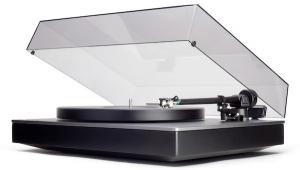I always dig your style, dude. Warts and all, I understand more when the truth is delivered, given your observations.
Great comparisons and reference point from the old review. Clearly your value system has evolved with your equipment.
I think this type of writing is really what HP envisioned in an accurate delivery of a review. Provide clarification, use comparisons, but get to the heart of the system to the truth through listening.
To a greater point, gently asking the manufacturer to take a second look at their product through an honest assessment of their product, can only help everyone, especially when the product is pretty dang sound everywhere else. (A felt mat does seem like an entire mechanical interface was ignored in its design. I also agree that acrylic platters have their own sound vs. other materials.)
Tell it like it is, from what you've heard.
Ps- I know I'll sound like a shameless whore for saying this, but I wish you would've tried the Herbie's Grungebuster Mat. I really would've loved to read if you liked it, hated it, whatever. The Boston didn't really improve the acrylic platter's laid back nature? (Sounds like not so much...)
































































